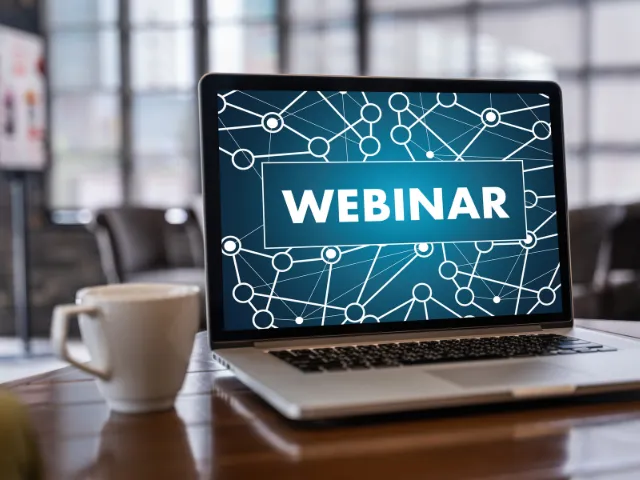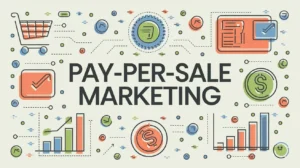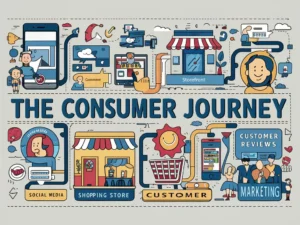Webinars in Affiliate Marketing are an effective way to connect with your audience, build credibility, and promote products through live presentations. They provide a platform to deliver value, answer questions, and create a sense of urgency for potential buyers.
Understanding Affiliate Programs
Affiliate programs generally fall into one of three main categories:
- Pay Per Sale (PPS): Affiliates earn a commission when a sale is made through their referral link. This model is common in e-commerce.
- Pay Per Lead (PPL): Affiliates receive payment when a referred user takes a specific action, such as signing up for a newsletter or filling out a contact form.
- Pay Per Click (PPC): Affiliates get paid each time a user clicks on their affiliate link, regardless of whether or not a sale is made.
| Program Type | Description | Commission Structure |
|---|---|---|
| Pay Per Sale | Commission is earned on completed sales | Variable, usually a percentage of sale |
| Pay Per Lead | Payment for specific actions like sign-ups | Fixed amount per lead |
| Pay Per Click | Payment per click on affiliate link | Fixed amount per click |
Exploring Affiliate Examples
Several well-known brands have implemented successful affiliate programs that serve as great examples for marketers.
Amazon Associates: One of the largest and most recognized affiliate programs, it offers a wide array of products and earns affiliates a commission on every sale initiated through their links (Referral Rock).
Fiverr: This program has seen growth through social media influencers who promote its services, earning commissions for every new sign-up driven by their referrals.
ActiveCampaign: Known for its lifetime recurring commissions and valuable resources, this program is attractive for those looking to promote marketing automation tools.
Leadpages: This service offers competitive commissions of up to 50% for affiliates promoting their lead generation products.
Airalo: A global brand and providers of eSim, primarily aimed at travellers and digital nomads.
Webinars are rapidly becoming an essential tool in the realm of affiliate marketing. They provide a dynamic platform for marketers to connect, educate, and convert their audience into loyal customers.
Benefits of Affiliate Marketing Webinars
Hosting webinars in affiliate marketing offers numerous advantages that can significantly enhance marketing strategies:
Personal Connection: Webinars allow marketers to interact with current and potential affiliates on a personal level. They foster relationships and build trust, which can lead to increased engagement and sales (Easy Affiliate).
Increased Engagement: Over 60% of marketers already utilize webinars, showcasing their effectiveness as a content marketing tool. By offering real-time interaction, attendees are more likely to participate and ask questions.
Education and Awareness: Webinars serve as a platform to educate the audience about the benefits of the products being promoted. This educational aspect can ultimately lead to higher conversions and boosted commissions for affiliate marketers.
Scalability: Webinars can reach a large audience with minimal effort, especially in one-to-many contexts. Marketers can efficiently deliver their message to numerous affiliates at once, maximizing time and resources.
| Benefit | Description |
|---|---|
| Personal Connection | Builds trust and engagement with affiliates |
| Increased Engagement | Higher participation rates during sessions |
| Education and Awareness | Informed audience leads to increased conversions |
| Scalability | Reach larger audiences efficiently |
Hosting Successful Webinars
To maximize the effectiveness of webinars in affiliate marketing, proper hosting strategies must be employed. Key considerations include:
Content Quality: Prepare valuable content that resonates with the audience. Share insights, tactics, and expertise about the affiliate products being promoted to keep the audience engaged.
Promotion: Effectively promote the webinars through social media, email lists, and affiliate networks. Highlight the benefits of attending to encourage registrations (email list affiliate marketing).
Technical Setup: Ensure that the right technology is in place for seamless delivery. Use reliable webinar software like WebinarJam and test all equipment beforehand to prevent technical issues during the live session.
Follow-Up: Post-webinar, reach out to attendees with thank-you emails, provide additional resources, and encourage them to participate in your affiliate program. This follow-up can greatly enhance conversion rates.
Feedback: Solicit feedback from participants after the webinar to improve future sessions. Understanding what the audience found valuable helps in refining and tailoring future content.
Implementing these strategies can significantly enhance the impact of webinars in affiliate marketing, making it a powerful addition to any affiliate marketer’s content strategy.

Webinars can be a powerful tool in affiliate marketing, providing an opportunity to connect with audiences and promote products effectively. Strategic preparation and promotion are critical steps for successful webinars.
Preparing for a Webinar
Preparation and practice prior to hosting a webinar are essential to alleviate nervousness and ensure a confident presentation style. Key steps to prepare include:
- Outlining the main points to address.
- Creating an engaging slide deck.
- Running through the presentation multiple times.
- Familiarizing oneself with the chosen platform.
Crucial elements that contribute to a successful webinar are:
| Element | Description |
|---|---|
| Clear Objective | Define what you want to achieve during the webinar. |
| Audience Knowledge | Understand who your targeted audience is and tailor content to their needs. |
| Powerful Presenter | Choose someone who can deliver content effectively. |
| Engaging Experience | Use interactive elements to keep attendees interested. |
| Effective Messaging | Craft clear and persuasive messaging for the audience. |
| Strong Analytics | Utilize analytics to gather insights for future events. |
| Excellent Software | Use reliable webinar software for seamless delivery. |
Host question-and-answer (Q&A) sessions during the webinar to explain how promoted products work, thus increasing audience confidence and boosting sales.
Promoting Your Webinar

Extensive promotion of the webinar is vital to attract affiliates and maximize attendance. Various promotional tactics include:
- Sending email invitations.
- Posting on social media platforms.
- Leveraging affiliate networks.
- Encouraging affiliates to share the information.
The ideal time to begin promoting a webinar is 2-3 weeks before the live event date. A typical promotional timeline is as follows:
| Timeline Stage | Action |
|---|---|
| Weeks in Advance | Announce the webinar and start building interest. |
| Midway Follow-Up | Send gradual follow-up emails to maintain awareness. |
| Increased Urgency | Heighten urgency as the date approaches. |
| Final Reminders | Send out reminders close to the event. |
| Day of Webinar | Continue promotions on the actual day. |
Attendees typically register for a webinar by providing their email addresses, which can aid in expanding your contact list. Recipients of promotional emails will be more inclined to open them since they already have a familiarity with the content, helping to enhance overall marketing efforts.
Webinars play a significant role in affiliate marketing strategies, allowing marketers to engage with their audience effectively. By leveraging the content generated from webinars and monitoring performance metrics, they can enhance their overall marketing efforts.
Leveraging Webinar Content

Once a webinar is completed, the content can be repackaged and used again as part of a broader marketing strategy. This offers an opportunity to extract valuable insights and material for future promotions related to affiliate marketing. Webinars not only educate the audience about product benefits but also provide recorded content for on-demand viewing. Marketers can create promotional snippets, blog posts, and social media content from the recorded sessions.
Incorporating elements such as question-and-answer sessions can enhance engagement. These interactive segments explain how promoted products work, build audience confidence, and ultimately drive sales. Additionally, offering free handouts during webinars—such as extra information, demonstrations, or related product recommendations—can enhance the overall experience and potentially increase affiliate sales.
| Webinar Content Opportunities | Description |
|---|---|
| Recorded Sessions | Reuse for future promotions or training |
| Q&A Segments | Address audience inquiries to boost confidence |
| Free Handouts | Provide added value and information on products |
Monitoring and Optimizing Performance

To maximize the effectiveness of webinars in affiliate marketing campaigns, it is essential to monitor their performance continually. This includes tracking metrics such as attendance rates, engagement levels, and conversion rates. Such data provides insights into what works well and what needs improvement.
For example, analyzing audience feedback can guide future content, while conversion tracking can help determine which product promotions were most successful. By optimizing aspects of the webinars—like presentation style, content delivery, and promotional strategies—marketers can refine their approach to resonate better with their audience.
The affiliate marketing industry has experienced significant growth, from $5.4 billion in 2017 to $8.2 billion in 2022 (BigCommerce). Therefore, utilizing webinars as a tool for affiliate marketing is increasingly becoming a preferred strategy among affiliate marketers.
In summary, effective use of webinars in affiliate marketing can yield substantial benefits. Educating audiences through engaging and interactive sessions not only enhances their understanding of products but also promotes affiliate sales effectively. Consider leveraging the content generated from these webinars and consistently monitoring performance metrics to optimize future strategies. For insights on the different kinds of affiliate marketing, explore our section on types of affiliate marketing intro.
What are the main types of affiliate marketing programs?
There are three main types of affiliate marketing programs:
Pay Per Sale (PPS): Affiliates earn a commission when a referred sale is completed.
Pay Per Lead (PPL): Affiliates receive a fixed payment when users take specific actions like signing up for a newsletter or filling out a form.
Pay Per Click (PPC): Affiliates are paid based on the number of clicks their referral links generate, regardless of whether a sale is made.
How do I choose the right affiliate program for me?
Choosing the right affiliate program depends on your niche, audience, and goals. If you’re promoting high-ticket items, Pay Per Sale (PPS) programs can offer higher commissions. If your audience is likely to take specific actions (like signing up), Pay Per Lead (PPL) programs can be lucrative. Pay Per Click (PPC) programs work best if you have high traffic but less purchase intent.
What is webinar affiliate marketing?
Webinar affiliate marketing involves using webinars to promote products or services. Marketers use live or recorded webinars to explain, demonstrate, and educate audiences about affiliate products, increasing engagement and sales.
Why should I use webinars for affiliate marketing?
Webinars allow you to:
Build a personal connection with your audience, increasing trust.
Engage viewers in real-time through Q&A sessions.
Educate your audience about products, leading to better understanding and more conversions.
Scale your efforts, reaching large audiences efficiently with minimal effort.
What are the key benefits of using webinars in affiliate marketing?
Personal connection: Helps build trust and engage your audience.
Increased engagement: Webinars have higher participation rates.
Education and awareness: Better-informed audiences are more likely to convert.
Scalability: Reach large audiences with a single presentation.
How do I promote my webinar effectively?
Start promoting your webinar 2-3 weeks in advance through:
Email invitations
Social media posts
Affiliate networks Use a promotional timeline to build anticipation, follow up with reminders, and send final alerts on the day of the event to maximize attendance.
How can I measure the success of my webinar?
Key performance indicators (KPIs) to monitor include:
Attendance rates
Engagement levels (e.g., participation in Q&A sessions)
Conversion rates (how many attendees took action after the webinar) Use this data to refine your future webinars and improve audience engagement.
What technology do I need to run a successful webinar?
You’ll need:
Reliable webinar software: Platforms like Zoom, WebinarJam, or GoToWebinar.
Presentation tools: Ensure your slide deck is engaging and visually appealing.
Stable internet connection: Test all equipment beforehand to avoid technical issues during the event.
Can I reuse my webinar content?
Yes! You can repurpose webinar content in many ways:
Share recorded sessions for on-demand viewing.
Use Q&A segments to address audience inquiries.
Create social media snippets or blog posts based on the content.
Offer free handouts or additional resources to enhance the audience experience.











